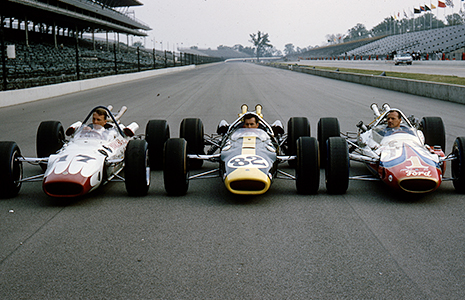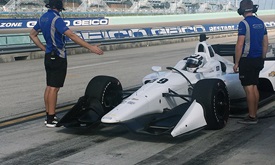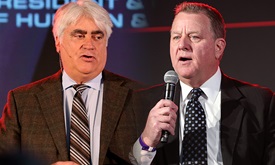Gurney's legacy will continue to live on in motorsports
JAN 23, 2018
“In the final analysis of course, large crowds of paying spectators are the keys to success for all. Track owners and a sanctioning body who aggressively promote these big events — which by contract will feature the teams and driving stars, will get the crowds … which in turn excites the sponsors and TV networks and the crowd, etc., thereby upgrading the entire sport business. It is my firm belief that rather than cutting the cost of racing which in itself is nearly impossible, it is far more important to make money more readily available by increasing the popularity and prestige of the sport with the general public.”
-- Dan Gurney’s “White Paper,” 1978
Of everything Dan Gurney contributed to motorsports in his 86 years, this paragraph was perhaps his most significant contribution.
That’s saying something. It would take volumes (and many have tried) to put into words what Gurney’s accomplishments as a driver, owner and inventor meant to motorsports. Yet a few words – more specifically, what those words accomplished – were as powerful as the following:
- Gurney was the first driver to win races in sports cars, Formula One, NASCAR and Indy cars. Only Mario Andretti and Juan Pablo Montoya have done it since.
- His work to perfect the Ford GT40 remains one of the great accomplishments in the history of the 24 Hours of Le Mans. Likewise, his win at Le Mans in 1967 with A.J. Foyt stands as one of the greatest achievements by American drivers on the international stage.
- In all, he won four Formula One races in 11 years and seven races in nine years in Indy cars. Only three times during that time did he have a full-season ride.
- He won five NASCAR races. In just 16 starts.
- He was the first Formula One driver to wear a full-face helmet.
- He invented the champagne spray.
- More significantly, he invented the Gurney flap, an addition to the rear wing that increased downforce but didn’t add enormous drag.
- And there was the Gurney bubble, an add-on to the GT40 that allowed Gurney, who was 6 feet, 4 inches tall, to fit into the car.

- He reportedly was the only driver who worried the great Jim Clark. (The front row in 1965 Indianapolis 500 qualifying consisted of (from left) Gurney, Clark and Foyt.)
- Then there were the remarkable victories. In 1967 at Riverside, he fell two laps down when a tire deflated and forced a change. He rallied to win the race on the final lap.
- Car and Driver magazine somewhat facetiously suggested Gurney should run for president in 1964. More than a half-century later, Dan Gurney for President is a Facebook page, and Dan Gurney for President bumper stickers are collectors’ items.
That doesn’t even begin to list the remarkable accomplishments of one of the greatest we’ve ever seen. But the “White Paper” is his legacy, and his argument in writing it was correct; racing needs streamlined control from its sanctioning body and more input and influence from team owners. The argument led to the creation of CART. Say what you will about what has transpired in the four decades since, but his notion was correct and necessary.
Dan Gurney saw and understood all aspects of motor racing, from technology to invention to marketing to ownership to driving. He didn’t just understand it all, he was exceptional at it all. Fans of the sport are blessed that many of its greatest talents continue to contribute and be involved years and decades after their driving careers end.
We witnessed one of the greatest. Or, as Mario put it best when Gurney passed away last week:
“I was first inspired by him when I was in midgets dreaming of being like him. I was last inspired by him yesterday. Yes, I mean forever.”
RIP Dan Gurney. I was first inspired by him when I was in midgets dreaming of being like him. I was last inspired by him yesterday. Yes, I mean forever. He understood me better than anyone else, which is why he wrote the foreword for my book in 2001 #DanGurneyHasFinishedTheRace pic.twitter.com/twMkM2Mn0U
— Mario Andretti (@MarioAndretti) January 14, 2018



















